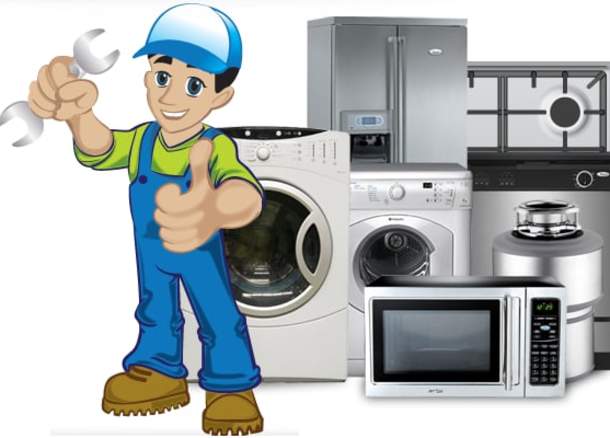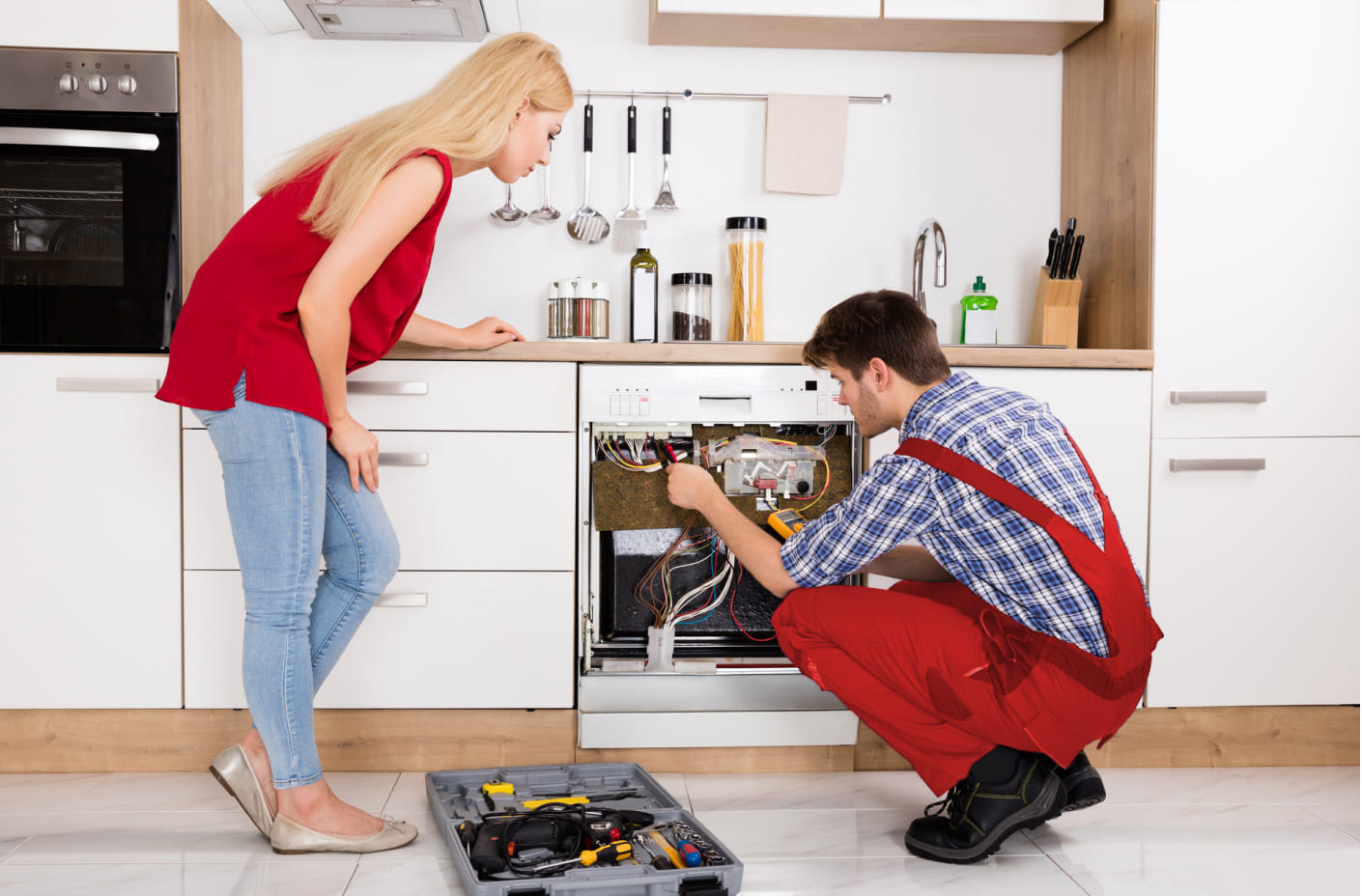The Ultimate Guide to Understanding Device Repair Work in your home
When your fridge quits cooling or your stove declines to heat, it can really feel frustrating. Recognizing home appliance repair in your home can save you time and cash. You'll find out to acknowledge symptoms, make use of vital tools, and comply with a systematic troubleshooting procedure. But prior to you begin, there are critical security precautions you require to take into account. What are the most typical problems, and how can you fix them? Let's check out the essentials.
Usual Home Appliance Troubles and Their Signs
When your devices start acting up, it's vital to acknowledge the indications beforehand. Ignoring them can lead to bigger problems and costly repair services. For instance, if your fridge isn't cooling correctly, you might notice cozy areas or condensation developing. This can show a falling short compressor or a blocked vent.Your dish washer might show problems through dirty meals or uncommon sounds during cycles. If you hear grinding or clanking, it's time to investigate.A washing maker that won't rotate or drain pipes can leave you with soggy washing, recommending a clogged up drainpipe or a malfunctioning pump.Lastly, if your stove's temperature seems off or it takes forever to preheat, you might be dealing with a faulty thermostat. By staying alert to these signs and symptoms, you can resolve issues before they escalate right into significant repairs.
Necessary Tools for Device Repair Work
When you're dealing with appliance repairs in the house, having the right tools is vital. Basic hand devices like screwdrivers and pliers will aid you take apart and repair numerous devices, while electrical testing gadgets guarantee you're working safely with circuitry. Let's review what you need to get started on your repair service journey.
Basic Hand Devices
Having the right tools is necessary for effective home appliance repair service in your home. Begin with a trustworthy screwdriver collection, including both flathead and Phillips types, as screws are typical in home appliance assembly. Pliers are additionally essential; they assist with gripping, twisting, and reducing cables or little parts. A pair of needle-nose pliers can reach limited areas conveniently. You'll require a good adjustable wrench for tightening up or loosening nuts and bolts. An utility blade is convenient for cutting through packaging or insulation. Don't neglect a strong workbench or surface area to securely arrange your devices and components. With these standard hand devices, you'll be well-prepared to deal with most device fixings that come your means.
Electric Screening Tools
Along with standard hand devices, electric screening devices play an important function in device repair. These devices help you detect electric concerns and guarantee appliances function safely. A multimeter is vital; it gauges voltage, current, and resistance, enabling you to pinpoint issues swiftly. A non-contact voltage tester is an additional must-have, letting you detect live cables without making straight call, boosting your security. Clamp meters are wonderful for gauging present circulation in cords without separating them, saving you time and initiative. Additionally, circuit testers can rapidly check if electrical outlets are operating effectively. By using these tools, you'll streamline your troubleshooting procedure and enhance your repair work skills, making device maintenance a lot much easier.
Step-by-Step Overview to Diagnosing Home Appliance Issues
When your home appliance acts up, it can be frustrating, however identifying the problem doesn't have to be overwhelming. You'll learn to recognize typical issues and apply effective repairing techniques. Allow's go through the actions to obtain your home appliance back in working order.
Typical Home Appliance Troubles

Troubleshooting Strategies Discussed

Fixing Major Kitchen Area Appliances: A Closer Look
Have you ever questioned exactly how to deal with common issues with your kitchen devices? Repairing significant kitchen area appliances like fridges, stoves, and dishwashers can be easier than you believe. Beginning by recognizing the trouble-- whether it's a refrigerator not cooling or an oven that won't warm. Frequently, an easy reset or examining the power resource can address the issue.For refrigerators, clean the condenser coils and examine the door seals. If your stove's not heating, examine the burner and thermostat. Dish washers may just require a tidy filter or a reset to get them back in activity. Constantly unplug the home appliance before diving right into repair services to ensure your safety.Don' t fail to remember to consult the individual guidebook for specific troubleshooting suggestions connected to your design. With a little bit of persistence and the right devices, you can with confidence tackle home appliance repair work and save cash in the procedure!

Troubleshooting Laundry Equipments: Tips and Techniques
When your laundry appliances start acting up, it can really feel frustrating, yet fixing them does not need to be a problem. Start by examining the power supply. Validate the device is plugged in and the outlet is working. Next off, inspect the door or lid button; a faulty button can protect against the machine from operating.For washing machines, if it's not spinning, look for unbalanced lots. Redistributing the clothes could resolve the issue. If your dryer isn't heating, tidy the dust filter and inspect the air vent for blockages.Listen for unusual noises; they can indicate a problem. If your appliance is leaking, inspect the tubes for splits or loosened links. File any error codes shown on digital displays, as they can guide you in identifying the problem. Consult the customer handbook for certain troubleshooting suggestions connected to your design.
Safety Precautions to Take During Fixes
Prior to you start any kind of appliance repair work, it's vital to focus on safety to stop crashes or injuries. First, unplug the device or shut off the circuit breaker to guarantee no power reaches it while you work. Usage insulated devices to decrease the danger of electrical shock. Use safety and security goggles and gloves to protect yourself from sharp sides or debris (Kenmore Dryer Repair Oro Valley Dependable Refrigeration & Appliance Repair Service).Make specific your work space is tidy and well-lit, so you can see what you're doing. Keep kids and pets far from the location to avoid disturbances and potential risks. If you're dealing with gas home read more appliances, be additional cautious; look for leakages before proceeding.Take your time, and don't rush via repairs. If you really feel unsure about any kind of step, it's better to pause and research than to guess. Following these precautions will assist produce a much safer environment for your do it yourself appliance repair work task
When to Call a Professional for Assistance
Exactly how do you know if it's time to hire a professional for home appliance repair services? If you've tried standard troubleshooting without success, it's a clear indicator. If your device still won't start or shows uncommon noises after resetting it, do not think twice to look for expert help.When you discover leakages, smoke, or shedding scents, prioritize safety and call a professional instantly. These concerns can result in even more substantial damage or position risks to your home.Also, if your appliance is under service warranty, calling an expert is typically the most effective course. They can assure that repair work won't invalidate your guarantee, saving you cash in the lengthy run.Finally, if you're unsure or awkward with complicated repair work, it's important to leave it to the experts. Remember, tackling difficult issues without the ideal expertise can bring about pricey errors. Trust fund a specialist when doubtful!
Often Asked Concerns
How Can I Stop Device Troubles in the Future?
To avoid device problems in the future, you should execute regular upkeep, check for damage, clean filters, and avoid overloading. Staying positive will help expand their lifespan and keep them running smoothly.
What Are one of the most Usual DIY Home Appliance Repair Work Mistakes?
You might ignore safety precautions, avoid repairing steps, or use wrong tools when attempting DIY appliance repairs. Hurrying the procedure or neglecting manufacturer guidelines can bring about more considerable problems and expensive blunders. Keep patient and informed!
Exactly how Do I Know if a Part Requirements Replacement?
You can tell if a part needs substitute by looking for uncommon noises, leakages, or irregular efficiency. If the home appliance struggles to operate correctly or reveals visible damage, it's likely time for a replacement.
Can I Make Use Of Generic Parts for Appliance Repair Works?
Yes, you can use common components for home appliance fixings, but identify they work - Kenmore Dryer Repair Oro Valley Dependable Refrigeration & Appliance Repair Service. Common components may save you cash, however they could influence performance or long life, so weigh your options carefully before making a decision
What Warranties Cover Home Appliance Repairs?
Most appliance warranties cover fixings for producing problems, but they usually omit damages from abuse. Check your warranty terms very carefully, as some might need using certified service technicians and initial components for coverage to continue to be legitimate.